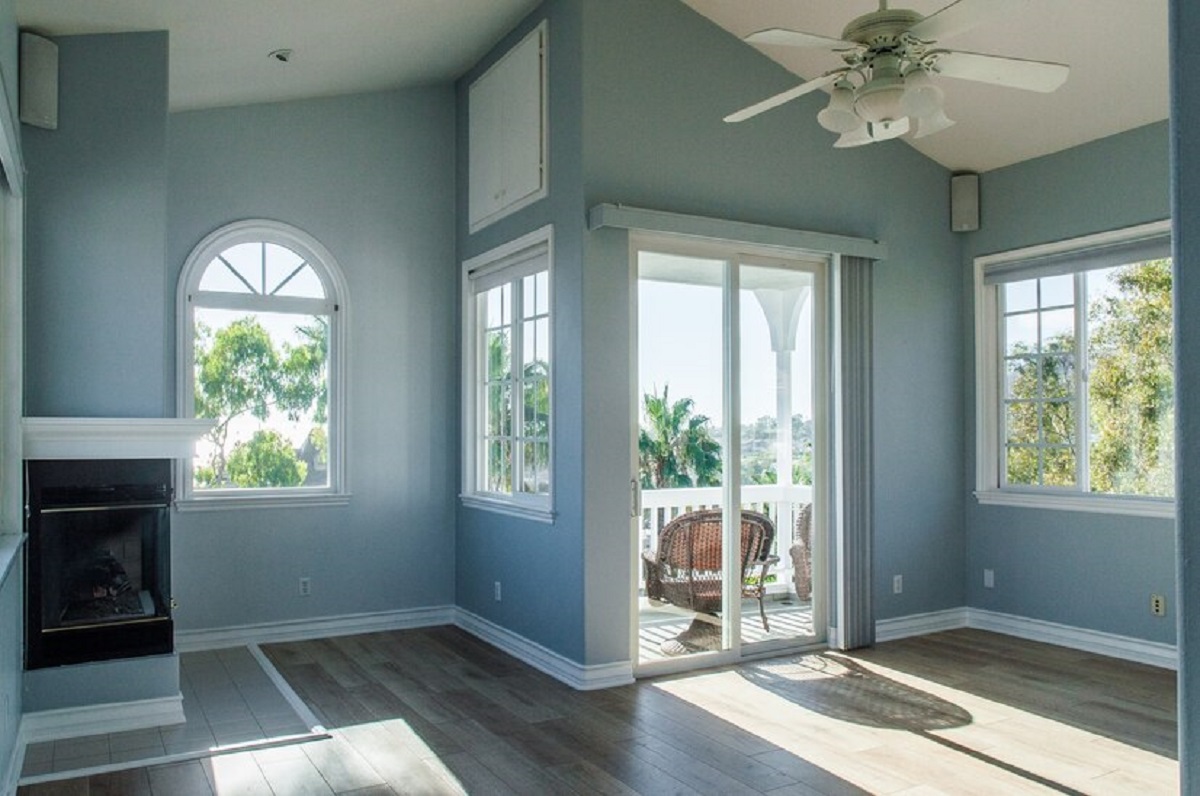When it comes to designing your living room, the number of windows can significantly impact the overall ambiance and functionality of the space. Windows play a crucial role in providing natural light, ventilation, and even visual aesthetics. But the question remains: how many windows should a living room have? In this guide, we’ll explore this topic in detail, considering various factors that can influence your decision. This content is presented by Thinkdifferentnetwork.com.
1. The Importance of Natural Light
Natural light can transform a dull living room into an inviting and vibrant space. It not only enhances the overall appeal of the room but also contributes to our well-being. When determining the number of windows, consider the direction of sunlight in your location. If you have a north-facing living room, you might need more windows to ensure ample sunlight throughout the day. On the other hand, if your living room faces south, you might want to balance light exposure to prevent excessive heat and glare. Explore Does the living room have two windows.
2. Room Size Matters
The size of your living room is a crucial factor in determining the number of windows. In smaller living spaces, having a few well-placed windows can create an illusion of openness. However, in larger living rooms, more windows might be needed to maintain a balanced and evenly lit environment. Consider the proportions of the room when deciding on the window count.
3. Architectural Style and Aesthetics
The architectural style of your home can influence the design of your living room windows. Different styles, such as modern, traditional, or minimalist, can call for varying window placements and sizes. These windows contribute to the overall aesthetics of the space. For example, a contemporary living room might feature large, floor-to-ceiling windows, while a rustic-style room could have smaller, cozy windows that complement the theme.
4. Views and Surroundings
If your living room overlooks a breathtaking view, such as a garden, mountains, or the ocean, incorporating more windows can help you make the most of it. Windows can act as picture frames, enhancing the visual experience from indoors. Additionally, consider your surroundings. If your living room is close to a busy street or a noisy neighborhood, strategic window placement can minimize noise infiltration.
5. Privacy Considerations
While natural light is essential, privacy is equally important. Depending on your location and the proximity of neighboring buildings, you might need to strike a balance between window count and privacy. You can opt for frosted or tinted glass, window treatments, or higher-placed windows to maintain privacy without sacrificing light.
You may like to read: How to Decorate a Coffee Table
6. Functional Ventilation
Windows play a vital role in providing ventilation, which is especially important for a living room where you spend a considerable amount of time. The number of windows should allow for cross-ventilation, ensuring fresh air circulates effectively. This is particularly beneficial during the warmer months.
7. Blending Indoor and Outdoor Spaces
If you have a patio, deck, or garden adjacent to your living room, the number of windows becomes integral in creating a seamless indoor-outdoor connection. Larger windows or sliding glass doors can blur the boundary between these spaces, making your living room feel more expansive and connected to nature.
8. Energy Efficiency
When determining window count, energy efficiency should not be overlooked. While windows bring in light, they can also impact heating and cooling costs. Opt for energy-efficient windows that are well-insulated to prevent heat loss during winter and heat gain during summer. Fewer, strategically placed windows can help maintain a comfortable indoor temperature year-round.
9. Personal Preferences and Lifestyle
Ultimately, the decision on how many windows your living room should have comes down to your personal preferences and lifestyle. Consider how you use the space. Do you enjoy cozy evenings with dimmed lighting, or do you prefer a bright and airy atmosphere? Tailor the window count to align with your daily activities and the mood you want to create in the room.
In conclusion, the number of windows a living room should have depends on various factors such as natural light, room size, architectural style, views, privacy, ventilation, indoor-outdoor connection, energy efficiency, and personal preferences. It’s essential to strike a balance between all these elements to create a harmonious and functional living space that suits your needs and enhances your quality of life.
FAQs
- How do I decide the size of the windows for my living room?
The window size should complement the room’s proportions. Consider consulting a designer to find the right balance.
- Can I add more windows to an existing living room?
Yes, it’s possible to add windows, but it’s essential to maintain the structural integrity of the building. Consult a professional for guidance.
- Are there window treatments that offer both privacy and light?
Yes, options like sheer curtains, blinds, and shades can provide privacy while allowing diffused light to enter.
- What if my living room doesn’t have great views? Should I still add more windows?
Absolutely. Well-placed windows can bring in light and make the room feel more open, even if the view isn’t spectacular.
- Should I prioritize aesthetics or functionality when choosing windows?
Both are important. The goal is to find a balance between aesthetics, functionality, and your personal preferences.

